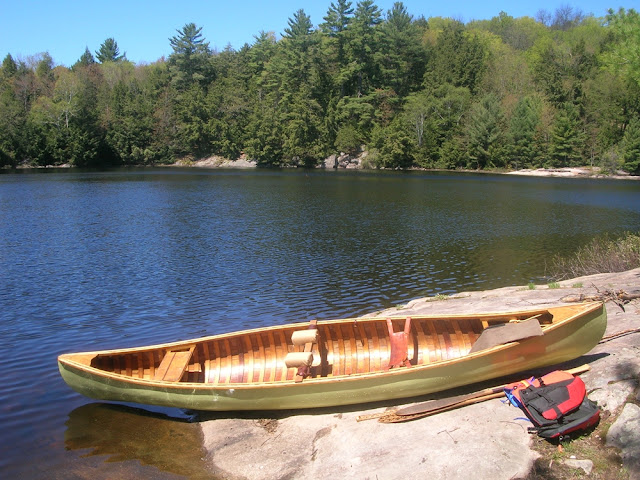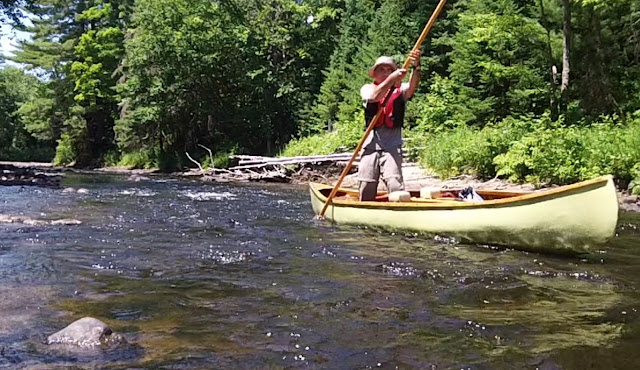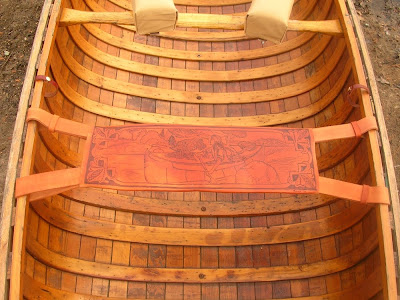I've got a late '70s 15 foot Langford. Looks to be their "Trapper" model. Wrote a little post about some of the build features on my site. It includes a 1979 model and price list. Link is here:
https://paddlemaking.blogspot.com/2015/09/canoe-identity-mystery-solved.html
Can confirm the build quality isn't the greatest. The planking on mine is very narrow red cedar , some complete with knots and saw marks. Perhaps they were using up that last of whatever they had in their stock before switching ownership. The hull had lots of gaps, steel fasteners, aluminum stem bands, etc. The excess use of oak makes them heavier than they need to be. I need those bulky shoulder pads attached the center thwart in order to portage mine any distance.
The rawhide lacing on Langford seats also to give out pretty quick. The simple cross weave pattern isn't that strong compared to a snowshoe style weave. By the time I got mine, someone just covered the seats with a plywood top.
All those aesthetic issues aside, it is still a decent canoe. It has a pretty deep, boxy design so it carries quite a bit of load. It handles very well in windy + wavy lake conditions for which it was intended. I've gone on multiple camping trips both solo and with my son. I see the build quality issues as being reason enough to actually use (even abuse) the boat like it was intended rather than pamper it for delicate use.
I also use it to go poling on some local shallow rivers. It is pretty stable for standing up if that is your thing...
Functionally, I found that the bow seat was placed too far forward. It's a tight squeeze up there for the bow paddler and if you intend to use the boat solo by sitting on the bow seat facing the stern, the trim will still be way off. For that reason, I use a temporary leather seat
If you are going to do a major restoration, you might consider changing the bow seat location to better suit your needs. Even if you don't change much to deal with aesthetic issues, I'm sure you'll enjoy paddling it.







